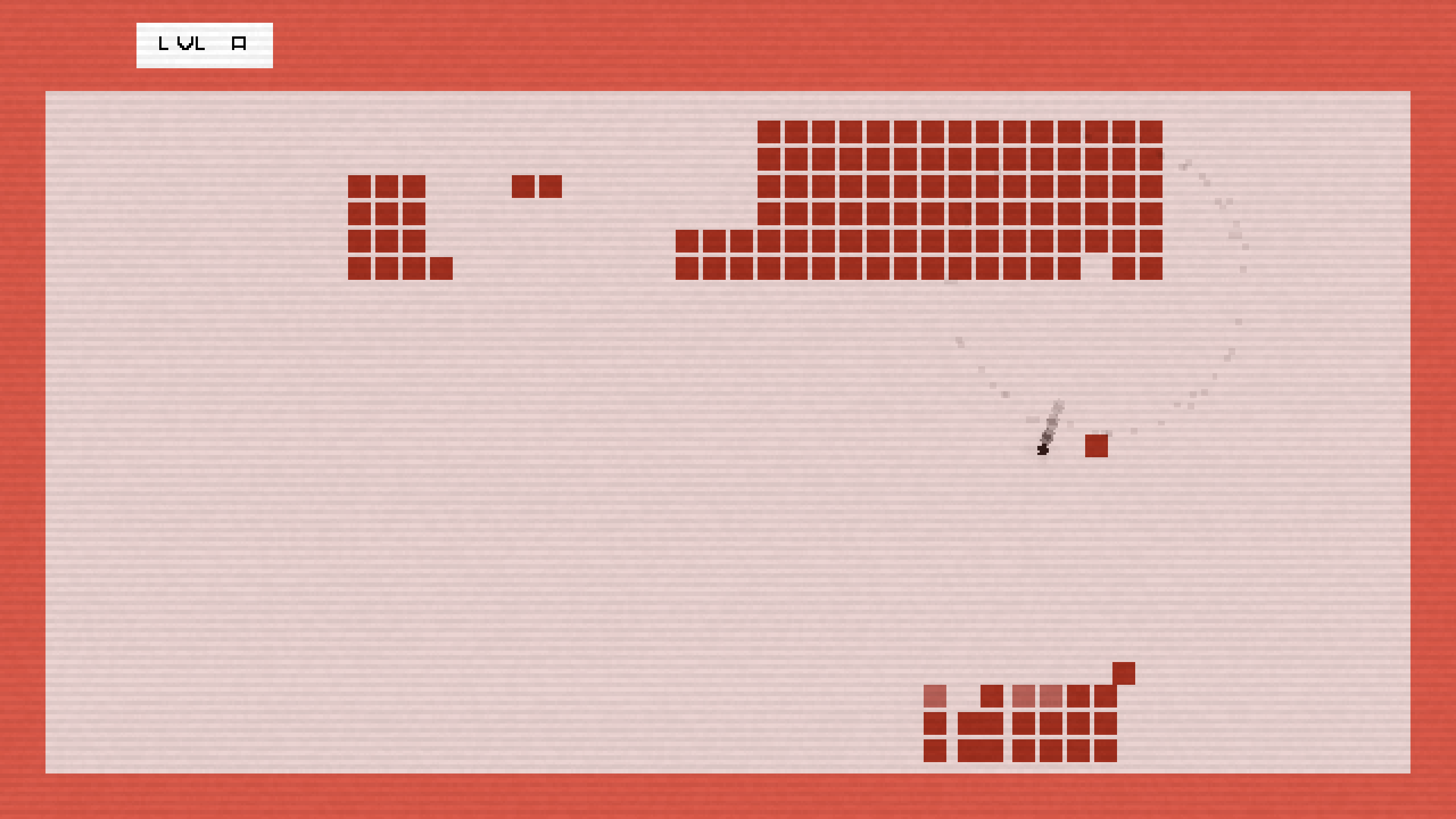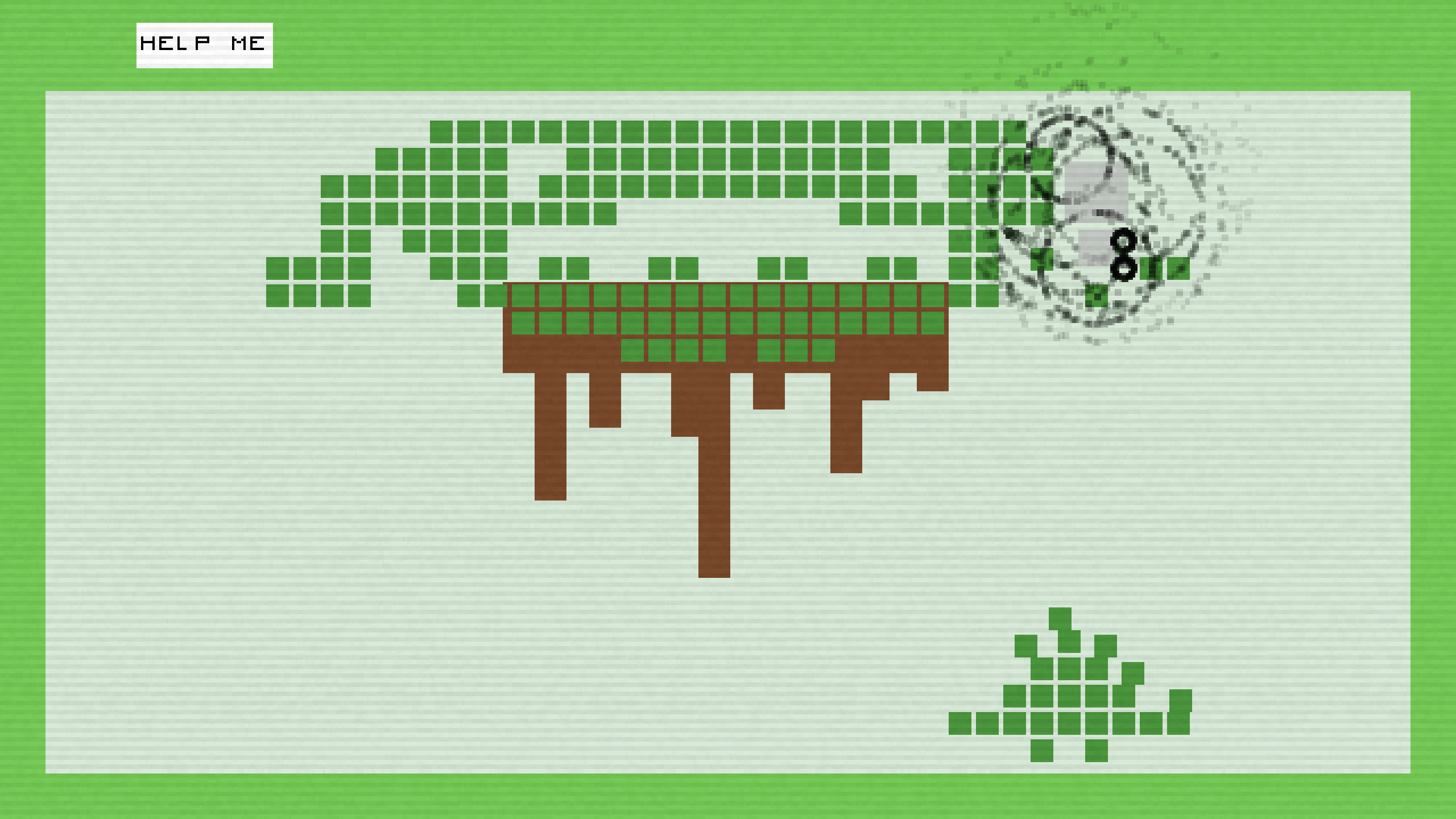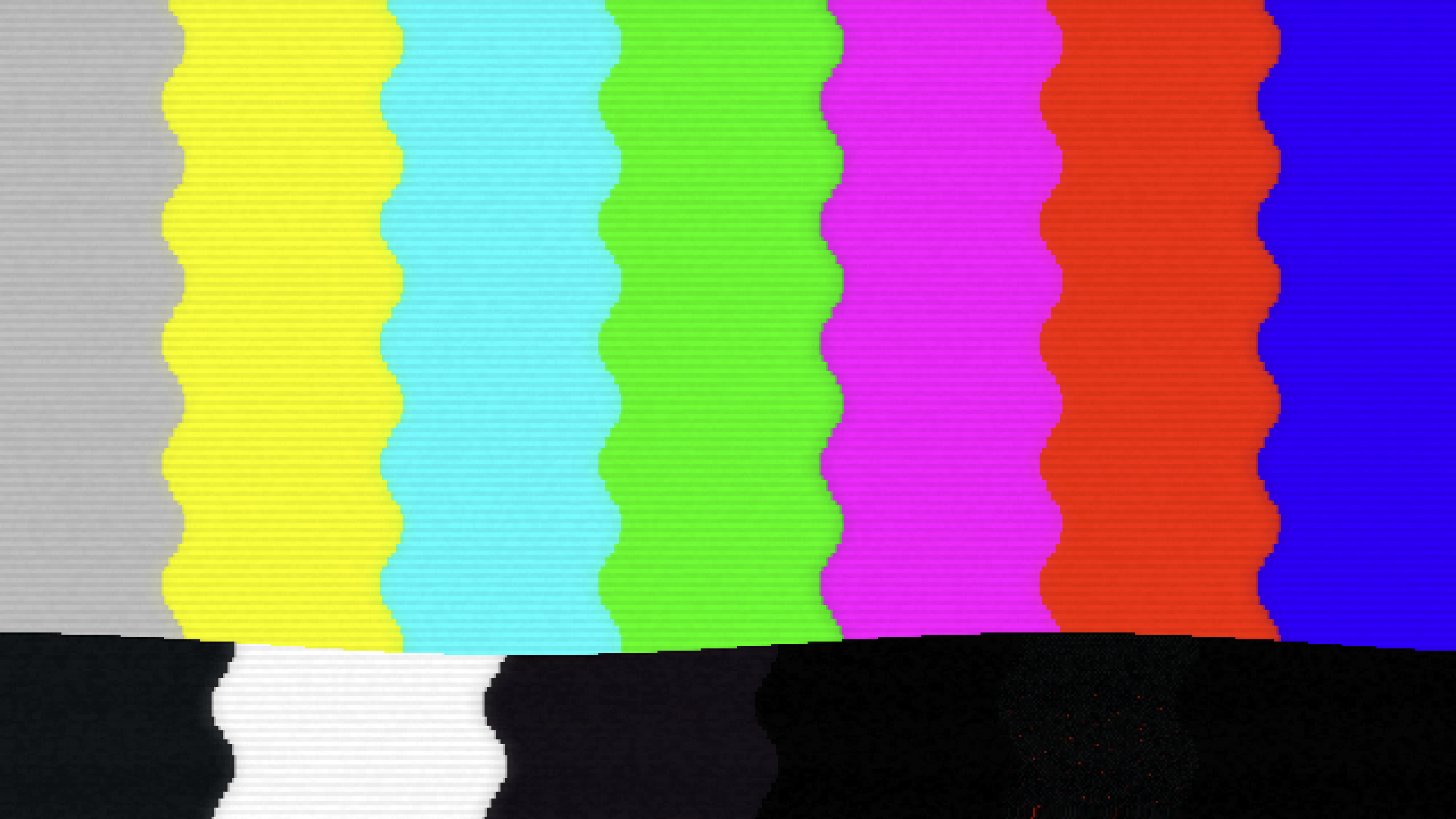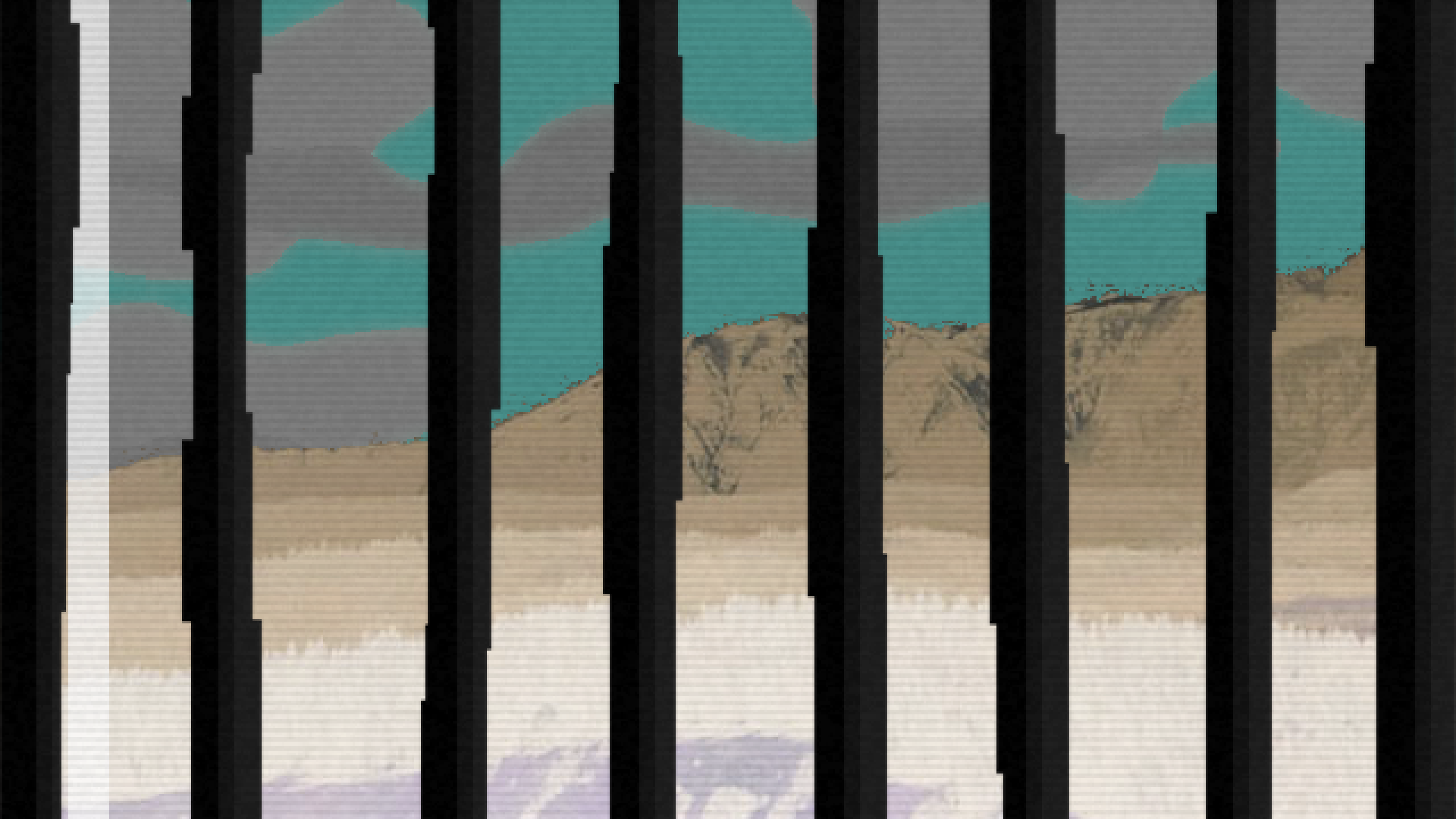This is the one hundred seventy-ninth entry in the Scratching That Itch series, wherein I randomly select and write about one of the 1741 games and game-related things included in the itch.io Bundle for Racial Justice and Equality. The Bundle raised $8,149,829.66 split evenly between the NAACP Legal Defense and Education Fund and Community Bail Fund, but don’t worry if you missed it. There are plenty of ways you can help support the vital cause of racial justice; try here for a start. Lastly, as always, you may click on images to view larger versions.
Our one hundred seventy-ninth random selection from the itch.io Bundle for Racial Justice and Equality has been discovered in an old game box. It’s BRKÖUT, by Fisher, and its tagline in the bundle reads:
Discover a terrible secret hidden inside your computer.
Honestly, if my computer is only hiding one terrible secret, I’ll be relieved.
The name BRKÖUT is a reference to Breakout, the 1976 arcade game that spawned endless imitators. You’ve probably encountered some. You know, those games where you have a paddle at the bottom of the screen that can move left and right, a bunch of bricks at the top of the screen, and a bouncy ball flying around in between. Use your paddle to prevent the ball from reaching the bottom of the screen, instead bouncing it upwards where it can break the bricks. Clear all the bricks to move to the next stage.
BRKÖUT is similar. Within the game’s fiction, it’s an HD remaster of a classic game for the Ensign Vic-30 (presumably a reference to the real-life VIC-20), so while it has classic Breakout-style gameplay, it features a nice modern chiptune-esque soundtrack, high resolution graphics and a smooth, high framerate. It’s even got some fancy particle effects when the ball bounces off of things, and all the colors shift a bit each time too. The underlying game, however, could easily have been a late 1970s classic, with its big square bricks. The twist on Breakout’s formula is that the player’s paddle is also made up of bricks, and the ball will slowly erode it over time. This is the real danger; letting the ball hit the bottom of the screen doesn’t actually matter, because there are umlimited resets for the ball. But losing one’s entire paddle leads to a game over screen.
To counteract this, when the ball breaks bricks in the upper part of the screen, they don’t just disappear, but rather fall downward. Catch them on the paddle and they stick to it, bulking up the paddle and replacing pieces lost by bouncing the ball. Falling bricks have other uses, too. As in traditional Breakout, getting the ball around the sides of the bricks until it’s above them is a great strategy, not just because it will bounce off the ceiling repeatedly and hit a bunch of bricks, but because those bricks will fall and then blast the bricks below them with tiny explosions. Each is accompanied by a little screen shake and a burst of particle effects, and these can also alter the ball’s trajectory in unexpected ways. It’s even possible to make a block rise upwards, if the paddle has accumulated enough bricks. Catch one when there’s no room for it, and it will rise instead, blasting any bricks directly above it.
These new ideas are enough to make the brick-breaking feel interesting again. Stages not only have different brick layouts to smash (often referencing other classic arcade games, like Space Invaders), they have different shaped paddles as well, allowing for some weird angled shots. It can’t completely escape the main pitfall of Breakout games, namely that hitting that pesky final brick on a given stage can take forever (although I think the ball does home in a bit in BRKÖUT when there’s just one brick left), but it’s pretty fun. If this were all BRKÖUT was, I would pronounce it a clever variant on a classic design, able to hold my attention across its handful of stages. But of course, BRKÖUT is more than this: there’s that dark secret thing mentioned in the tagline. After playing a few stages, players will start to see some mysterious messages appear, and things get weirder form there. To go into detail about these would be spoiling things, so I’ll just say that the secret stuff was broadly along the lines I expected, but had some really interesting details and execution.
I must praise the visual and audio design in these segments. The music moves far beyond the chiptune-inspired fare in the “proper” game, and does an excellent job of setting the tone for some very different experiences. Even the audio, still limited to the squelchy effects characteristic of early computer systems, is applied brilliantly when things start to get weird. The visual art is excellent too, shifting style and palette without completely shedding the pixelated look of the brick-breaking sections. It’s a really imaginative interpretation of the idea of secrets hidden within seemingly innocuous games, which has become something of a cliche in the indie development space.
Unfortunately for me, I was unable to finish BRKÖUT because I ran into a game-stopping bug. It’s a known bug that does not affect everyone, and I may have been able to get past it by completely uninstalling and reinstalling the game (and starting over) but there’s no guarantee that would work. So I ended up just watching the ending as a YouTube video (it’s embedded in a review that’s linked in that thread discussing the bug). It’s a shame I couldn’t reach it myself, since it sounds like the most interesting parts come in the final part of the game, which I was just about to enter. The ending sequence I watched is pretty cool, too.
Still, there were already enough interesting things in the parts of BRKÖUT I did play to make it worth it. If you’re a fan of games that turn out to be more than they appear, definitely give BRKÖUT a try. It’s easily finished in just one or two sessions, and it’s even a decent Breakout game to boot! Don’t worry if you missed it in the bundle; BRKÖUT is sold for any price you wish to pay, including free.
That’s 179 down, and only 1562 to go!





Leave a Reply